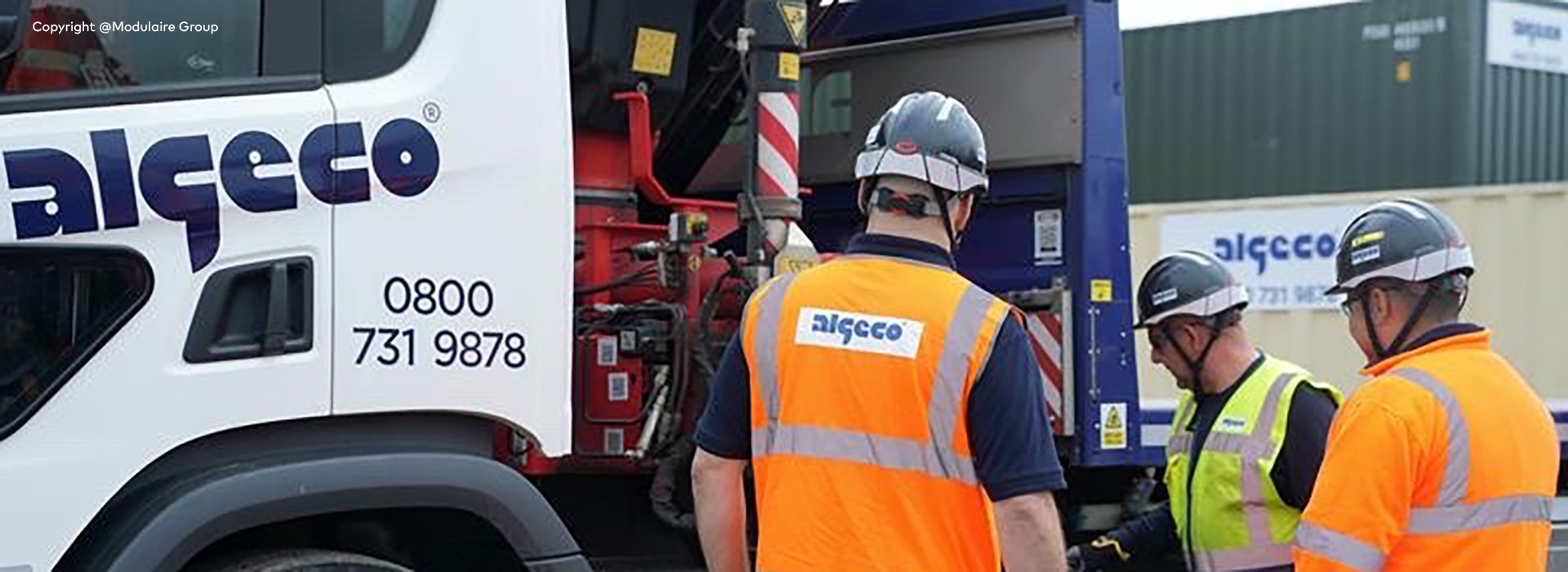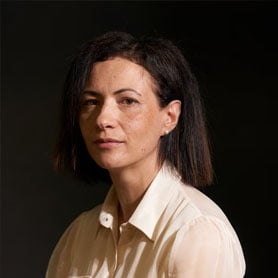Caterina Iannazzo: Championing a Culture of Safety and Care
With over 17 years of proven leadership in Health, Safety, and Environment (HSE) across global organisations and diverse industries, Caterina Iannazzo is an enthusiastic advocate of visible felt leadership to safeguard employee well-being and strengthen operational performance.


Caterina Iannazzo
Group Health, Safety & Environment Director, Modulaire Group
[October 2025]
Q.
Your career to-date has taken you all over the world across diverse sectors. How did your journey in safety begin, and what has inspired your career progression?
I never expected to find myself working in health and safety, especially as it was an area I had not really encountered during my mechanical engineering degree. My goal was to work in Formula One, with Ferrari naturally at the top of my list as an Italian. However, an opportunity to join a food company introduced me to the world of health and safety, and I quickly became fascinated by its breadth - particularly the strong emphasis on putting people at the heart of everything. It spoke to my heart and over the last 17 years I’ve taken on roles of increasing responsibility across regions and sectors, which I find really fascinating because of differences across sectors and mindsets of countries. I consider myself to be a very driven person and so I like the fact that there are always challenges to face, it’s never boring and it’s very rewarding because ultimately, we are working to protect people. I always think how my family would be impacted if I didn’t return from work one day and that’s what drives me forward. My career has evolved from compliance to a strategic and transformational journey, shaping culture and embedding safety into operations from food and beverage to chemicals and now the construction industry.
Q.
What is the main challenge of implementing safe working practices in different countries?
Implementing safe working practices can be far more challenging in some countries than others. In Europe, we grow up with certain safety standards ingrained in our culture, but working in regions with different perceptions of risk, the approach needs to adapt. I remember my first trip to India - it was an entirely different environment. Even outside the workplace, simply walking the streets was eye-opening: the traffic, the density of people, and the vastly different attitudes toward risk all highlighted the contrast. It makes the role more complex, but the goal remains the same - to keep everyone safe. Over the years, I’ve had the privilege to work across Europe, the Middle East, Africa and Asia-Pacific, and those experiences have profoundly shaped me. Each country brings its own challenges and its own culture, and I truly enjoy learning how to adapt practices to fit local realities while making them safer. At this point, I couldn’t imagine returning to a role limited to just one country or region; the richness of working globally is simply too valuable.
“Safety thrives when it is embedded in culture, and leadership amplifies this by walking the talk.”
– Caterina Iannazzo, Group Health, Safety & Environment Director, Modulaire Group
Q.
What in your view is key to changing mindsets and behaviours and how do you measure progress?
Safety thrives when it is embedded in culture, and leadership amplifies this by walking the talk. I have worked for companies, especially in the chemical sector, with lots of necessary procedures but it’s not enough. Safety is about a transformational journey that involves creating a culture whereby people not only choose the safest option but also understand why it’s the right choice and believe in it. This is the game changer, and is achieved by visible felt leadership, from the board level all the way through to leaders and supervisors. I have conducted training with leaders that focuses on how and why they need to show they care about their workforce – really motivating them from an emotional aspect. I truly believe that showing this authentic style of leadership creates trust and credibility that then encourages people to look out for each other and make the right decisions for themselves and those around them. When measuring progress, I look beyond incident rates. I pay attention to the quality of near misses reported, the depth of safety conversations, and the level of openness across the organisation. Communication plays a central role here, along with recognition and storytelling to celebrate safe choices and keep the momentum alive. People need to feel that their safe choices matter, and when those choices are acknowledged and shared, it reinforces the culture and inspires others to do the same.
Q.
What impact are psychosocial risks having on your role? Are there any other emerging risks that your sector is currently facing?
My role is expanding to address both physical and psychosocial risks because safety now extends beyond the workplace to include home, road, and mental wellbeing. Everyone needs to be doing so much more to support work-life balance rather than only addressing risks related to the physical environment. A key part of this relates to the way we now live and work because we are always connected. We can work from home, from airports, work hours can become blurred. We have access to a huge amount of information at our fingertips to digest, so people need the right tools and guidance to manage this. Some countries are more advanced, for example I was reading about Sweden’s pilot programme to test reduced-hour workweeks. It’s about finding ways to maintain productivity and embrace a different way of working. It’s very interesting to consider how we can look at this, train and support people to have the right balance. Another emerging risk I am very conscious of is the impact that changing weather patterns are having on health and safety. Extreme events - such as stronger winds, heavier rainfall, or prolonged heatwaves - are becoming more frequent, and this creates real challenges, particularly in industries like construction. Our risk assessments need to be dynamic and responsive: people must feel empowered to pause and ask, “Am I working safely in these conditions? Should I stop the job?
Q.
What role are advancements in technology and innovation playing in reshaping risk awareness and safety training?
Innovation is undoubtedly transforming safety. If we look at technologies like virtual reality (VR) and wearable PPE, they are transforming the way we train and engage people by creating more immersive and practical learning experiences. At the same time, artificial intelligence (AI) gives us powerful tools to analyse data, identify patterns, and even predict potential incidents before they happen. This is the future of safety prevention, and we simply cannot ignore it. I remember three years ago I was at an exhibition and was wearing VR headset that simulated a fall from a ladder. I still remember the sensation - it felt so real. My balance felt completely off, and I instinctively reached out to grab something that wasn’t there. It was an uncomfortable but powerful reminder of how terrifying a fall can be. In safety we usually use testimonials from injured people to showcase how they change their perspective after an accident. VR can change the dynamics by making an injury so real - you are going to feel it without someone telling you their story.
But technology alone isn’t enough - communication is key: clear, relatable, human messaging turns data into safer behaviour. I am very interested in looking at how we can use AI, because if we don’t get on board now, we will be left behind. How we introduce this to people is important too – it’s the added value that can make their life better. I had an interesting experience recently when I took a driverless taxi in Los Angeles, it did feel a little bit strange, but very comfortable knowing that the vehicles are programmed to always do the right things – there’s no erratic changing of lanes, or road rage and I have seen that their incident rate is very low. I don’t know how this will work in the future, but it’s quite exciting.
Q.
How do functions such as sustainability, operational risk management, and operational excellence contribute to building a safer, more resilient business?
Safety becomes embedded in the business when functions collaborate, not by working in silos. The outcome: a safer, more resilient, and agile company protecting its people. My approach is to connect through the common goals and make sure everyone is talking to each other and informing processes. Last year, World Safety Day was connected to climate change and so we worked closely with sustainability teams to explore how it impacts our way of working, sharing best practice across countries. I also work closely with operational excellence on 5S projects to strengthen housekeeping and keep the workplace organised and Kaizen initiatives help me continuously improve and standardise processes.
“Safety becomes embedded in the business when functions collaborate, not by working in silos. The outcome: a safer, more resilient, and agile company protecting its people.”
– Caterina Iannazzo, Group Health, Safety & Environment Director, Modulaire Group
Q.
Based on your own experience, what are the top three best practices when building a safety programme?
The most critical element is to engage everyone - connect leadership and frontline, focusing on why safety matters. Secondly, you need to go beyond compliance and inspire culture and behaviour by appealing to responsibility, care, pride and finally, always celebrate progress. Safety is often seen as being negative which is why it is important to recognise the positives by highlighting stories and small wins to show impact and reinforce safe choices. In my experience, celebrating safety brings people together - whether it’s BBQs in Germany, shared breakfasts in Norway, or simple team moments - they help to reinforce the feeling of being part of a team that genuinely looks after each other.